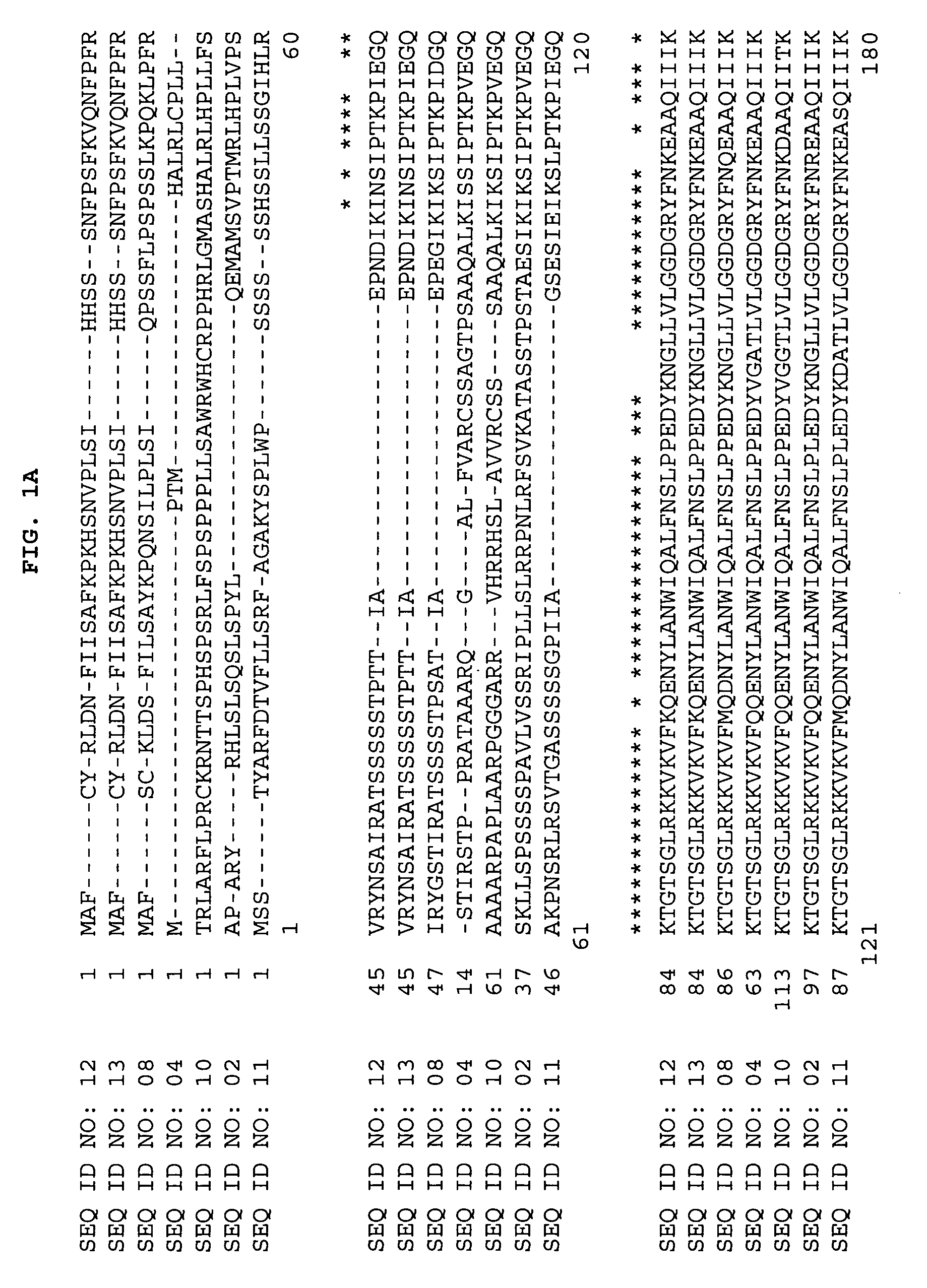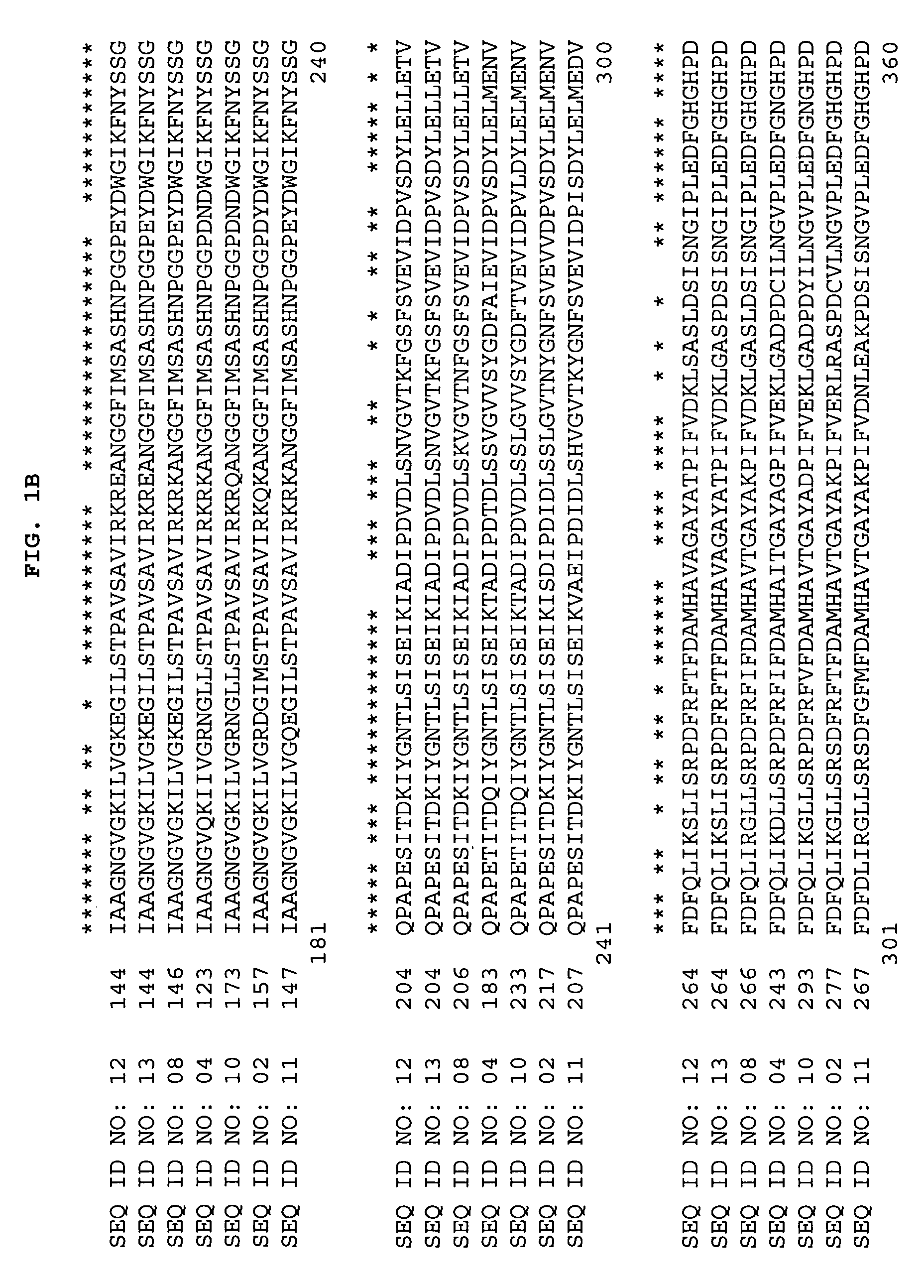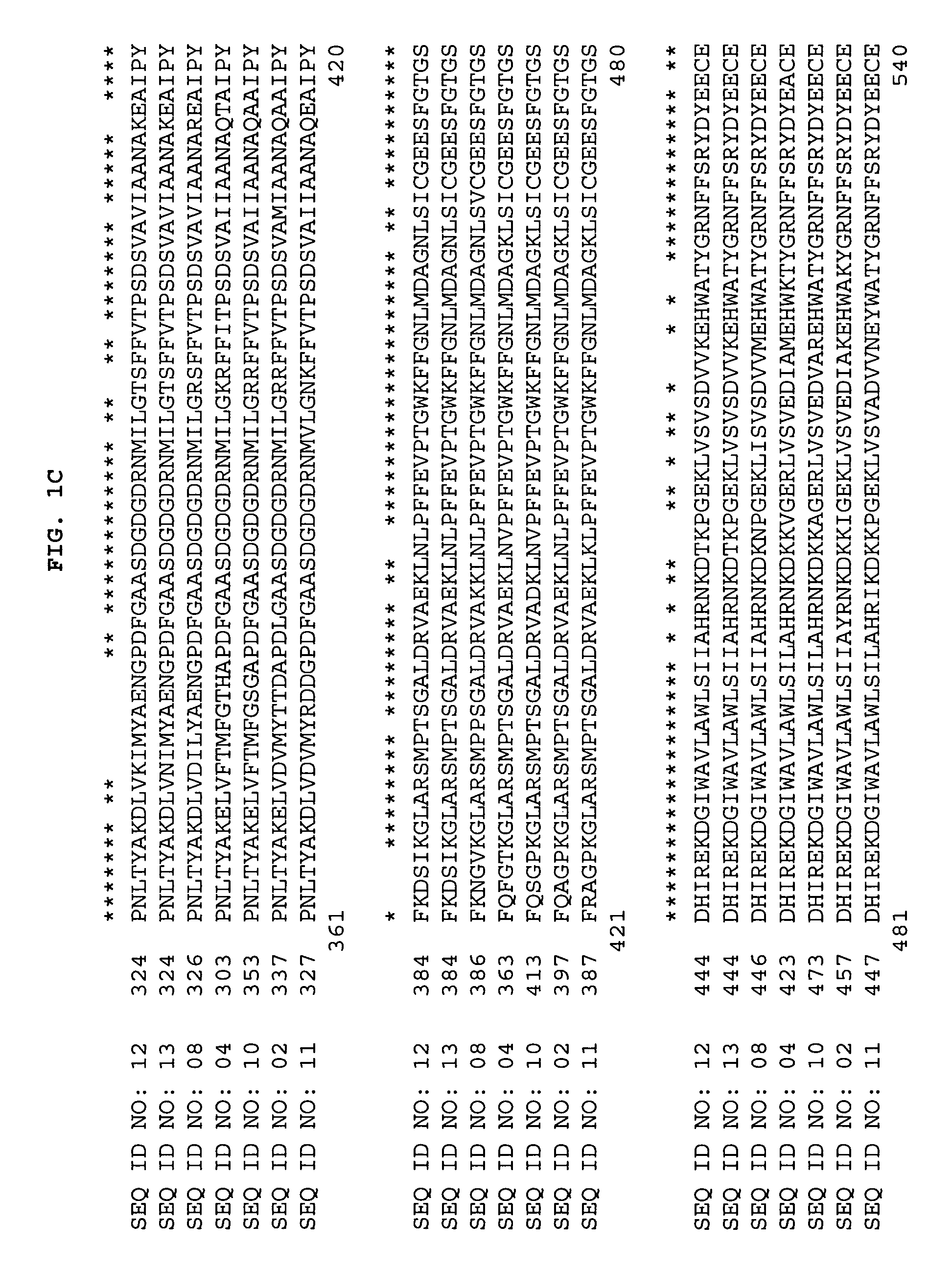Plastidic phosphoglucomutase genes
a phosphoglucomutase and plastid technology, applied in the field of plant molecular biology, can solve the problems of concomitant increase in the oil content of the embryo, decrease in the production of transient, etc., and achieve the effect of reducing the content of sucros
- Summary
- Abstract
- Description
- Claims
- Application Information
AI Technical Summary
Benefits of technology
Problems solved by technology
Method used
Image
Examples
example 1
Composition of cDNA Libraries; Isolation and Sequencing of cDNA Clones
[0279]cDNA libraries representing mRNAs from various cattail, corn, rice and soybean tissues were prepared. The characteristics of the libraries are described below.
[0280]
TABLE 2cDNA Libraries from Cattail, Corn, Rice and SoybeanLibraryTissueCloneetr1cCattail (Typha latifolia) rootetr1c.pk005.f8p0075Corn, root / leaf material from dark-grown 7p0075.cslaf22fday old Seedlingsp0075.cslaf22rbp0128Corn, pooled primary and secondaryp0128.cpicz81rimmature earrdi1cRice (Oryza sativa, Nipponbare) developingrdi1c.pk001.a22inflorescence at mitotic stagerth1cRice leaf inoculated with Magnaporta grisearth1c.pk009.k14fsdp3cSoybean developing pods 8-9 mmsdp3c.pk003.e22ses4dSoybean embryogenic suspension 4 daysses4d.pk0018.d10after subculturesdp2cSoybean developing pods 6-7 mmsdp2c.pk008.m2ssmSoybean shoot meristemssm.pk0072.e7sslSoybean seedling 5-10 dayssl.pk0021.h3sgs4cSoybean seeds 2 days after germinationsgs4c.pk005.b10
[0281]c...
example 2
Identification of cDNA Clones
[0282]cDNA clones encoding plastidic phosphoglucomutase proteins were identified by conducting BLAST (Basic Local Alignment Search Tool; Altschul et al. (1993) J. Mol. Biol. 215:403-410) searches for similarity to sequences contained in the BLAST “nr” database (comprising all non-redundant GenBank CDS translations, sequences derived from the 3-dimensional structure Brookhaven Protein Data Bank, the last major release of the SWISS-PROT protein sequence database, EMBL, and DDBJ databases). The cDNA sequences obtained in Example 1 were analyzed for similarity to all publicly available DNA sequences contained in the “nr” database using the BLASTN algorithm provided by the National Center for Biotechnology Information (NCBI). The DNA sequences were translated in all reading frames and compared for similarity to all publicly available protein sequences contained in the “nr” database using the BLASTX algorithm (Gish and States (1993) Nat. Genet. 3:266-272) prov...
example 3
Characterization of cDNA Clones Encoding Plastidic Phosphoglucomutase Proteins
[0283]The BLASTX search using the EST sequences from clones listed in Table 3 revealed similarity of the polypeptides encoded by the cDNAs to plastidic phosphoglucomutase from Brassica napus (NCBI General Identifier No. 6272125) and Pisum sativum (NCBI General Identifier No. 6272283 and NCBI General Identifier No. 10190529). Shown in Table 3 are the BLAST results for individual ESTs (“EST”), the sequences of the entire cDNA inserts comprising the indicated cDNA clones (“FIS”), contigs assembled from two or more ESTs (“Contig”), contigs assembled from an FIS and one or more ESTs (“Contig*”), or sequences encoding the entire protein derived from an FIS, a contig, an EST and PCR, or an FIS and PCR (“CGS”):
[0284]
TABLE 3BLAST Results for Sequences Encoding Polypeptides Homologous toBrassica napus and Pisum sativum Plastidic PhosphoglucomutaseCloneStatusBLAST pLog Scoreetr1c.pk005.f8 (FIS)CGS>254.00 (GI No. 6272...
PUM
| Property | Measurement | Unit |
|---|---|---|
| temperature | aaaaa | aaaaa |
| temperature | aaaaa | aaaaa |
| temperature | aaaaa | aaaaa |
Abstract
Description
Claims
Application Information
 Login to View More
Login to View More - R&D
- Intellectual Property
- Life Sciences
- Materials
- Tech Scout
- Unparalleled Data Quality
- Higher Quality Content
- 60% Fewer Hallucinations
Browse by: Latest US Patents, China's latest patents, Technical Efficacy Thesaurus, Application Domain, Technology Topic, Popular Technical Reports.
© 2025 PatSnap. All rights reserved.Legal|Privacy policy|Modern Slavery Act Transparency Statement|Sitemap|About US| Contact US: help@patsnap.com



